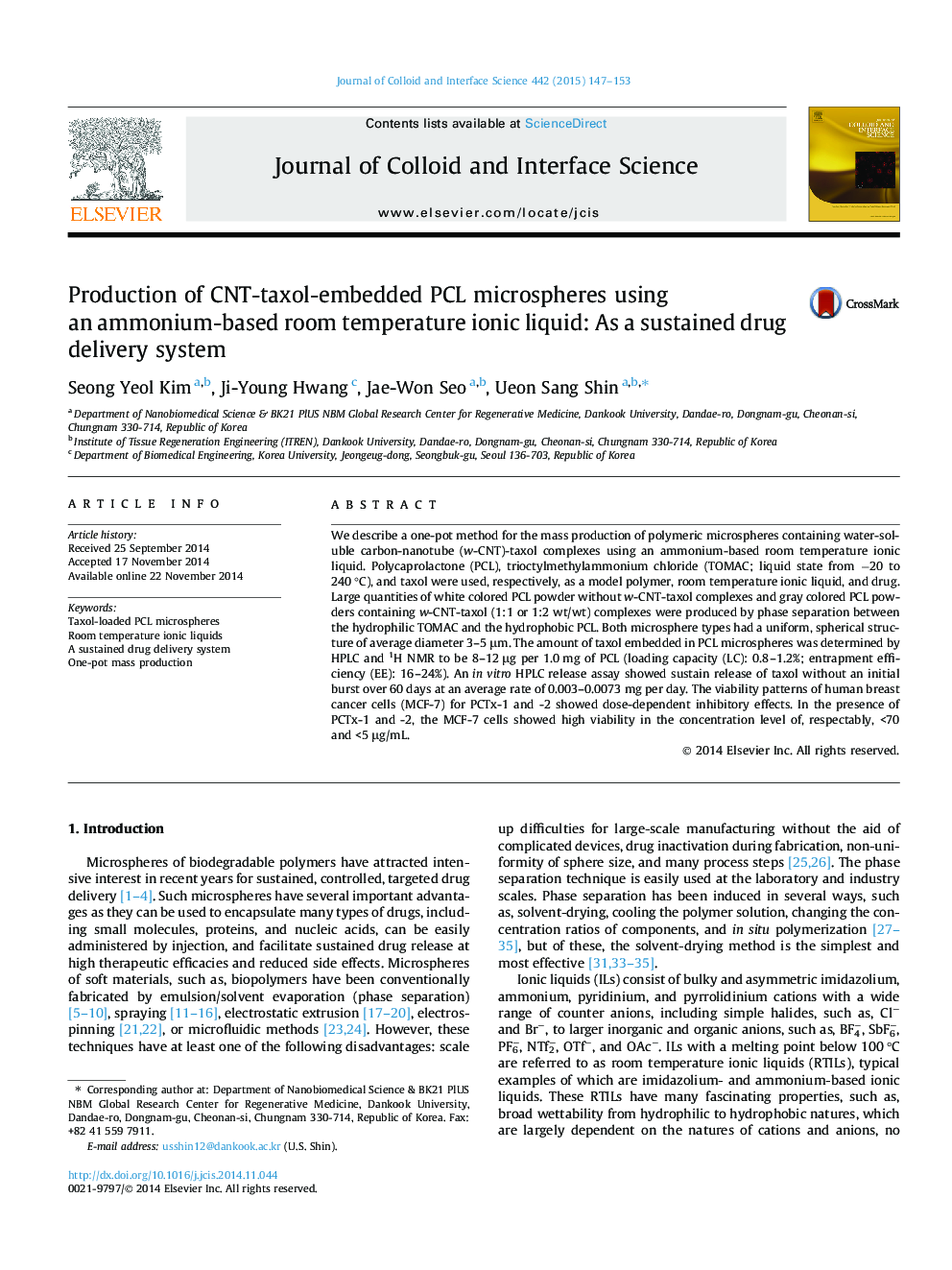| کد مقاله | کد نشریه | سال انتشار | مقاله انگلیسی | نسخه تمام متن |
|---|---|---|---|---|
| 606861 | 1454553 | 2015 | 7 صفحه PDF | دانلود رایگان |

• Preparation of PCL microspheres containing w-CNT/taxol complexes using room temperature ionic liquid.
• Loading capacity of 0.8–1.2% and entrapment efficiency of 16–24%.
• Sustain taxol release without an initial burst over 60 days.
• Dose-dependent inhibitory effects of human breast cancer cells (MCF-7).
We describe a one-pot method for the mass production of polymeric microspheres containing water-soluble carbon-nanotube (w-CNT)-taxol complexes using an ammonium-based room temperature ionic liquid. Polycaprolactone (PCL), trioctylmethylammonium chloride (TOMAC; liquid state from −20 to 240 °C), and taxol were used, respectively, as a model polymer, room temperature ionic liquid, and drug. Large quantities of white colored PCL powder without w-CNT-taxol complexes and gray colored PCL powders containing w-CNT-taxol (1:1 or 1:2 wt/wt) complexes were produced by phase separation between the hydrophilic TOMAC and the hydrophobic PCL. Both microsphere types had a uniform, spherical structure of average diameter 3–5 μm. The amount of taxol embedded in PCL microspheres was determined by HPLC and 1H NMR to be 8–12 μg per 1.0 mg of PCL (loading capacity (LC): 0.8–1.2%; entrapment efficiency (EE): 16–24%). An in vitro HPLC release assay showed sustain release of taxol without an initial burst over 60 days at an average rate of 0.003–0.0073 mg per day. The viability patterns of human breast cancer cells (MCF-7) for PCTx-1 and -2 showed dose-dependent inhibitory effects. In the presence of PCTx-1 and -2, the MCF-7 cells showed high viability in the concentration level of, respectably, <70 and <5 μg/mL.
Figure optionsDownload high-quality image (63 K)Download as PowerPoint slide
Journal: Journal of Colloid and Interface Science - Volume 442, 15 March 2015, Pages 147–153